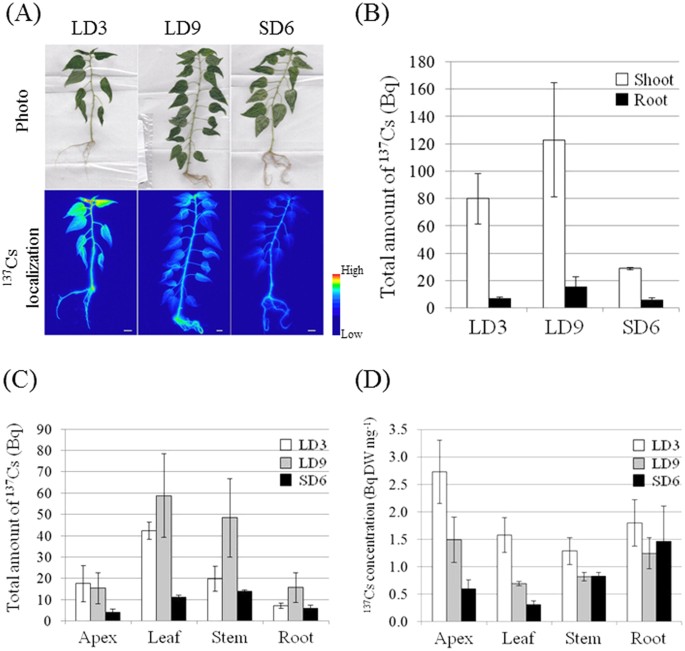
- Select a language for the TTS:
- UK English Female
- UK English Male
- US English Female
- US English Male
- Australian Female
- Australian Male
- Language selected: (auto detect) - EN
Play all audios:
Short day length-induced alteration of potassium (K) localization in perennial trees is believed to be a mechanism for surviving and adapting to severe winters. To investigate the
relationship between cesium (Cs) and K localizations, a model tree poplar, hybrid aspen T89, was employed. Under short day length conditions, the amount of 137Cs absorbed through the root
and translocated to the root was drastically reduced, but 42K was not. Potassium uptake from the rhizosphere is mediated mainly by KUP/HAK/KT and CNGC transporters. In poplar, however, these
genes were constantly expressed under short-day conditions except for a slight increase in the expression a KUP/HAK/KT gene six weeks after the onset of the short-day treatment. These
results indicated that the suppression of 137Cs uptake was triggered by short day length but not regulated by competitive Cs+ and K+ transport. We hypothesize that there are separately
regulated Cs+ and K+ transport systems in poplar.
In 2011, the Fukushima Daiichi Nuclear Power Plant accident released a large amount of radionuclides into the environment. Due to its long half-life, radioactive cesium (137Cs) was
considered the main contaminant. To estimate the transfer process of 137Cs in the terrestrial environment, we focused on its behavior in woody plants because the transfer process within the
forest ecosystem is much slower than it is in other areas1. After the forest contamination by 137Cs, depositions to tree canopies, leaf- and/or bark uptake, acropetal branch translocation,
etc. were energetically investigated2,3,4. Little is known about the physiology of Cs transfer and distribution within trees. Cesium chemically resembles potassium (K) but it is not an
essential nutrient for plant growth. Avery reported that Cs+ inhibits the inward-K+ channels in the plasma membrane and is therefore considered toxic to plants5. In general, rhizosphere Cs+
consists mostly of stable 133Cs and its concentration is






